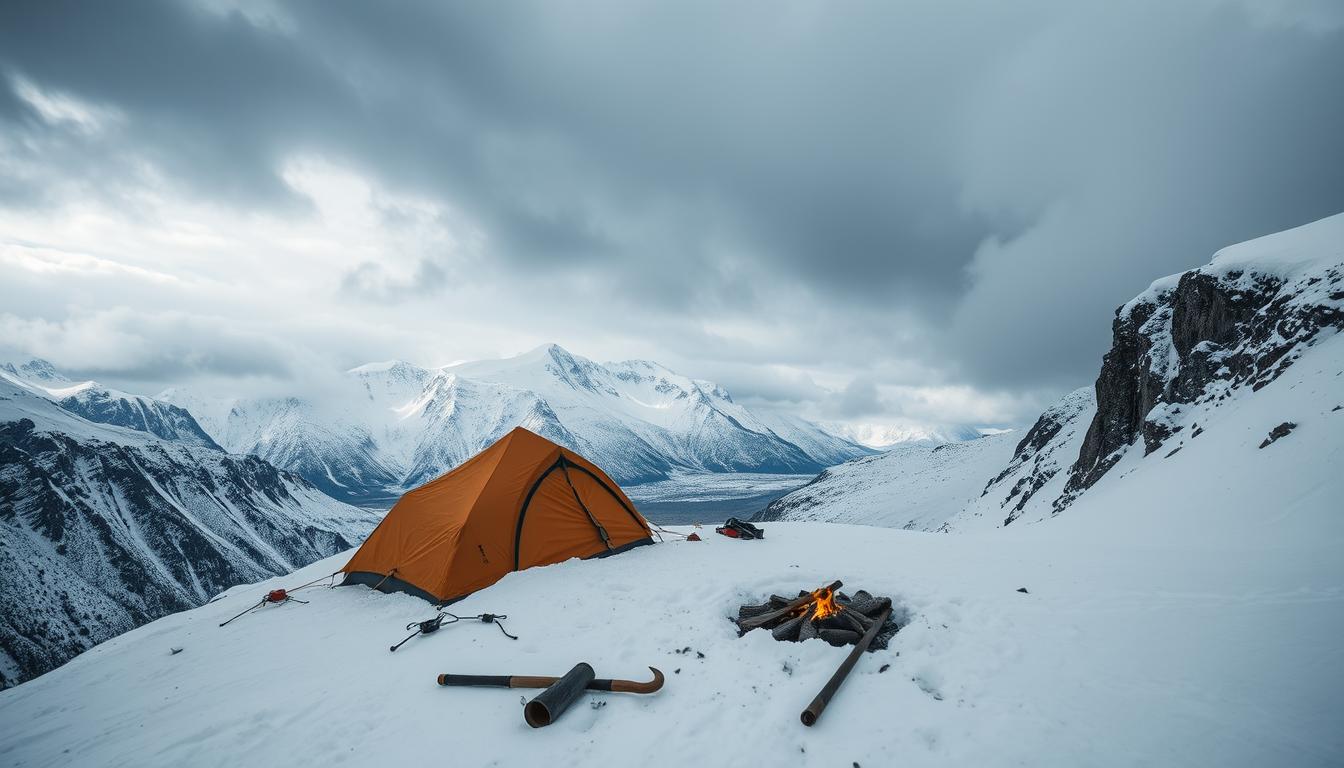Imagine being trapped in a cold canyon, your limbs freezing, your body shutting down. Or lost in the Sahara, your throat dry, your mind racing for relief. These survival tales show the incredible strength of the human spirit.
Aron Ralston’s story is unbelievable. He was trapped by a boulder for five days in Bluejohn Canyon. He had to amputate his own arm to escape, losing 40 pounds. Mauro Prosperi, lost in the Sahara in 1994, ate bats and drank his own urine to survive. He walked 180 miles before being rescued, his body badly damaged.
These stories remind us of our fragility and strength. As climate change worsens, we face more extreme weather. These tales teach us the value of survival skills, preparation, and the human spirit.
Key Takeaways
- Survival stories in extreme climates showcase the incredible resilience of the human spirit
- Climate change is making extreme weather conditions even more menacing, with estimates suggesting over 200 million people will be uprooted by extreme storms in the next 20 years
- Proper preparation and outdoor survival expertise are crucial when facing nature’s wrath
- These stories serve as a testament to human adaptability and the importance of proper preparation when facing life-threatening situations
- The fragility and resilience of the human condition are highlighted through these harrowing tales
The Siberian Miracle: Lost in Ice
Siberia’s harsh landscapes have taken many lives. Yet, some have bravely faced the arctic survival challenges. The Lykov family is a prime example, living in the Siberian taiga for over 50 years, from 1936 to 1986.
The Lykovs, led by Karp, fled religious persecution. They found refuge in the remote Siberian wilderness, near the Mongolian border. There, they built a life away from the world, with two more children born during their wilderness adventures. But, the harsh conditions took a toll, and Karp’s wife, Kulina, died from starvation in 1961.
The family’s survival was truly remarkable. They mostly ate potato patties with hemp seeds and ground rye. The youngest son, Dimitri, hunted for meat using traps he dug himself. The daughters spoke a unique language, rarely seeing the world outside their family.
In 1978, geologists found the family by air, spotting their garden. Sadly, two children, Savin and Natalia, died soon after. Dimitri died from pneumonia, and Karp passed away from heart failure in 1988.
The Lykov family’s story is a testament to human resilience. Their survival in Siberia’s harsh taiga is a true arctic survival miracle.
Defying Death in the Sahara Desert

The Sahara Desert is the world’s largest hot desert, covering much of North Africa. It’s as big as the United States. Temperatures can hit over 180°F, and the sand dunes shift constantly. The weather is unpredictable, making it a tough place for anyone to survive.
In 1994, Italian police officer Mauro Prosperi got lost during the Marathon des Sables. This is a 156-mile ultramarathon across the Sahara. For nine days, he fought dehydration, hunger, and the harsh weather.
Prosperi drank his own urine and ate insects and reptiles to stay alive. His story shows the human will to survive. He lost 35 pounds and almost died from liver failure.
Despite this, he kept going. When he was found, he was 180 miles from where he started. Doctors gave him 16 liters of fluids to help him recover. He couldn’t eat solid food for months and took two years to fully heal.
Prosperi’s tale is a warning about the Sahara’s dangers. It shows how important it is to be well-prepared and equipped. The desert has killed many explorers, with nearly 50% dying in the 1960s.
Climate change is making the Sahara even harsher. Prosperi’s story teaches us about the need for survival skills. It reminds us to approach such environments with caution and respect.
Stranded Atop Mount Everest
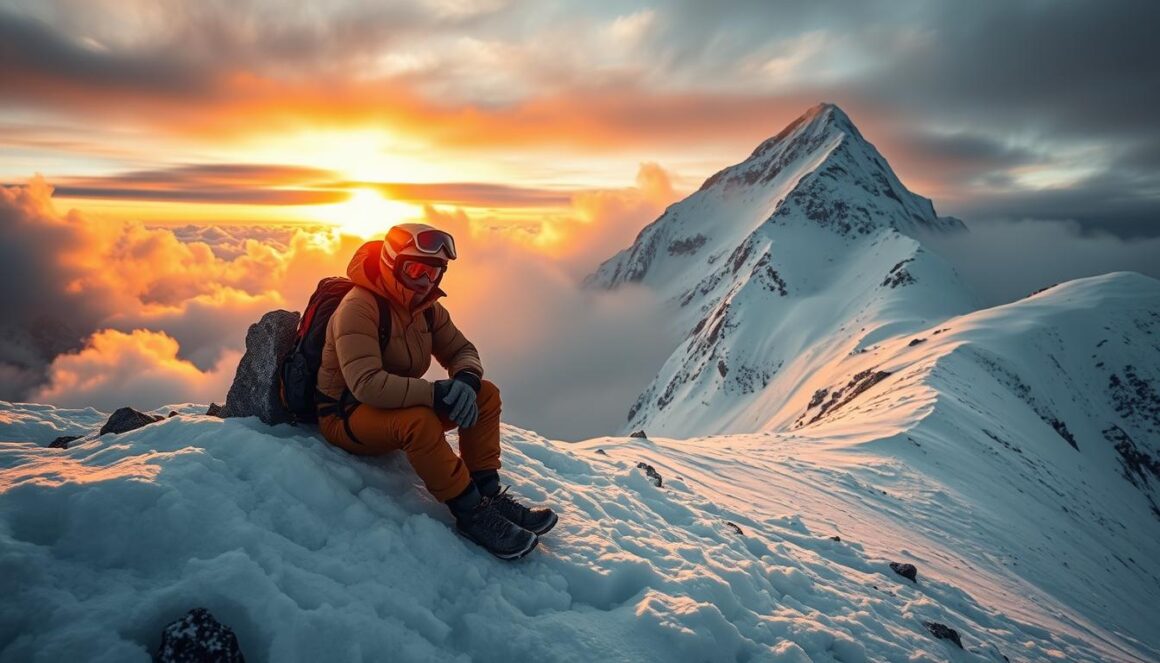
Mount Everest, the highest peak, is a challenge few can conquer. In the “death zone,” survival is a test of human limits. In 1996, a group of climbers, including Beck Weathers, faced this harsh environment.
The team had prepared for two years but faced extreme weather. Winds hit 157 miles per hour, and temperatures dropped to minus 21 degrees Fahrenheit. Eleven climbers fell at an 8,000-foot drop, with one woman freezing to death and another with frostbite.
Beck Weathers, already blind from a cornea procedure, was left for dead. He spent 10 hours in the “death zone” waiting for rescue. Despite the odds, he survived a hypothermic coma, showing incredible will to live.
After this ordeal, Beck Weathers lost his arm, fingers, and parts of his feet. Yet, he didn’t let his experience define him. His story, told in “Into Thin Air,” shows the human body and mind’s strength in extreme conditions.
The 1996 tragedy on Everest killed eight people, with bodies left on the mountain. The line between life and death on Everest is thin. It shows the mountain’s unforgiving nature and the challenges it poses to climbers.
Surviving the Amazon Rainforest
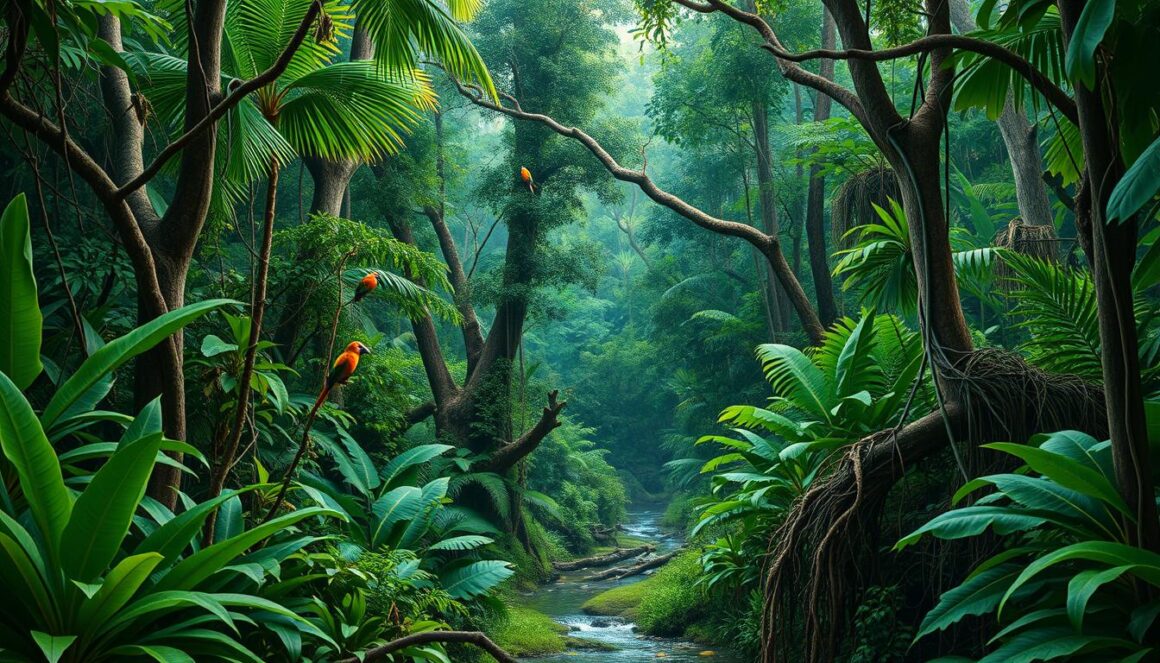
The Amazon rainforest is full of dense vegetation and diverse wildlife. It poses unique challenges for those looking for wilderness adventures and survival skills. While specific stories from the factual data don’t directly relate to Amazon survival, the experiences of outdoor survival experts in other extreme environments provide valuable insights.
Juliane Koepcke survived the LANSA Flight 508 crash in the Amazon. Despite the tragedy that claimed 92 lives, Juliane’s resilience and adaptability allowed her to endure eight days in the jungle. She counted 35 worms on her arm, treated herself with gasoline, and survived on just a few sweets. Her story was later made into a movie and a documentary, highlighting the power of the human spirit in the face of adversity.
Four indigenous children from the Huitoto tribe in the Colombian Amazon also showed impressive survival skills. They were stranded for 40 days and used traditional knowledge to survive. They foraged for cassava bread and flour and drank rainwater for hydration. Their ability to navigate the dense rainforest, despite challenges like venomous snakes and unpredictable weather, is a testament to the value of indigenous wisdom.
The Amazon rainforest demands a unique set of wilderness adventures and survival skills. These stories of resilience and adaptability show the importance of finding food and water, navigating unfamiliar terrain, and protecting oneself from wildlife and the elements. They are crucial for those seeking to conquer the challenges of this lush but dangerous ecosystem.
Lost at Sea: Pacific Ocean Ordeal
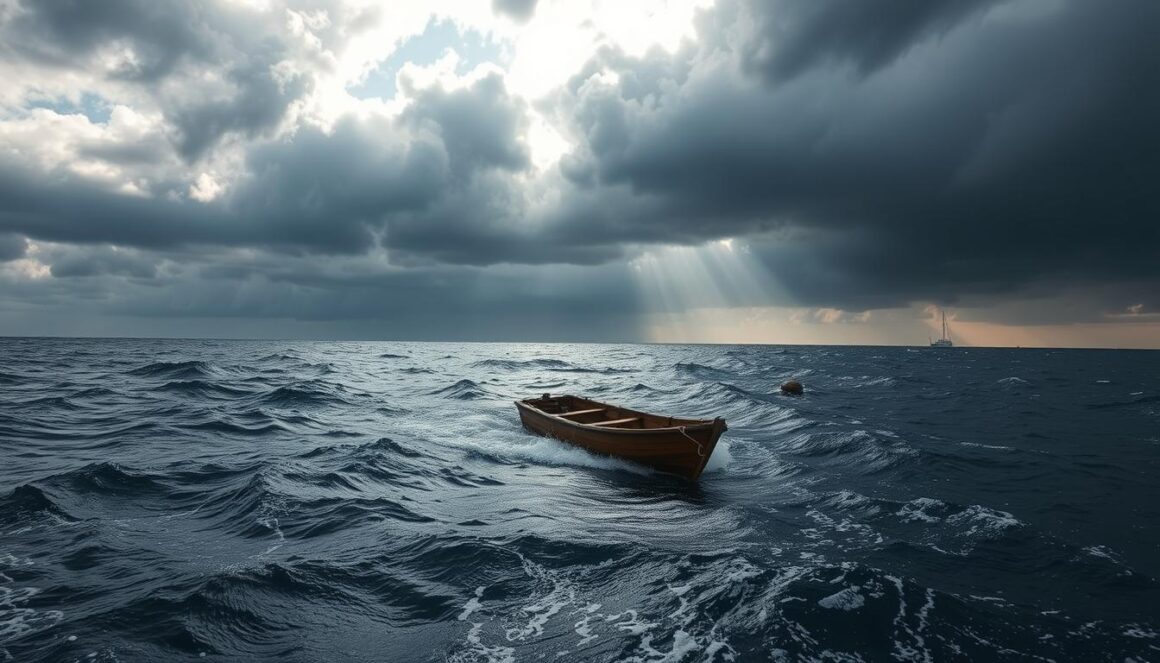
The Pacific Ocean has seen incredible survival stories. Fishermen and solo sailors have faced life-threatening situations. Their stories are both inspiring and humbling.
José Salvador Alvarenga, a Salvadoran fisherman, survived 13 months at sea. He was blown off course and spent 438 days alone, traveling 5,500 to 6,700 miles. He ate raw fish, turtles, and jellyfish, and drank rainwater and turtle blood. Alvarenga’s story is the longest recorded survival at sea, showing the extreme measures needed to survive.
Another story is Timothy Lyndsay Shaddock, a 54-year-old Australian sailor. He was rescued after three months at sea with his dog. His catamaran was damaged by bad weather, and he and his dog Bella survived on raw fish after losing their ability to cook.
These life-threatening situations are not just individual stories. In 2016, a Colombian fisherman was rescued after two months at sea, while three of his crewmates died. In 2014, a Salvadoran fisherman was found on Ebon atoll in the Marshall Islands after 13 months at sea. Their journeys show the survival techniques they used to face the Pacific Ocean’s dangers.
Conquering the Gobi Desert’s Wrath
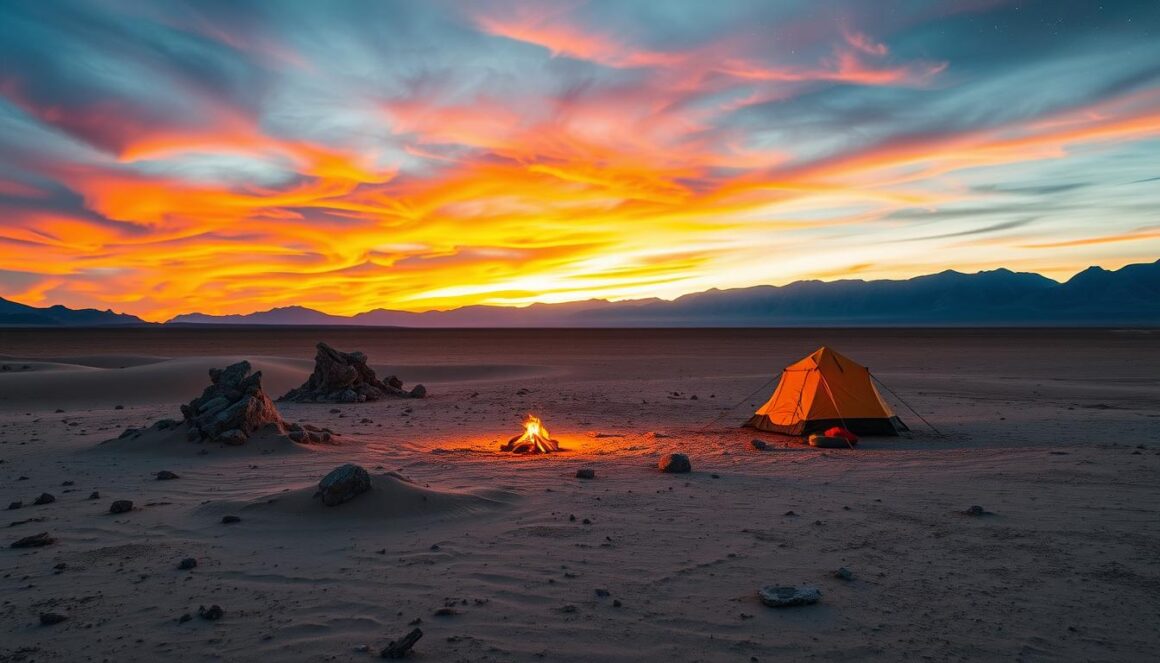
The Gobi Desert stretches across China and Mongolia, offering a tough test for survival. It has extreme temperatures, from very hot to very cold. This harsh environment pushes people to their limits, showing the strength of the human spirit.
Mauro Prosperi, an Italian runner, got lost in the Sahara Desert. He survived by drinking dew and eating insects. The Gobi Desert also tests adventurers with its unique challenges.
In April 1989, climbers Jim Sweeney and Dave Nyman faced many avalanches in the Gobi. Nyman spent six hours to lower Sweeney to safety. This rescue, involving helicopters and mountaineers, showed the value of teamwork.
The Gobi Desert has seen many expeditions and adventures. Westerners trekked here seventy years ago. Their stories, along with those of adventurers and missionaries, enrich our understanding of exploration and cultural exchange.
Survival stories in the Gobi Desert inspire us. They remind us of the power of human resilience. Whether it’s Prosperi’s resourcefulness or the climbers’ rescue, these tales motivate us to face challenges with courage and determination.
Trapped Underwater: Scuba Diver’s Nightmare
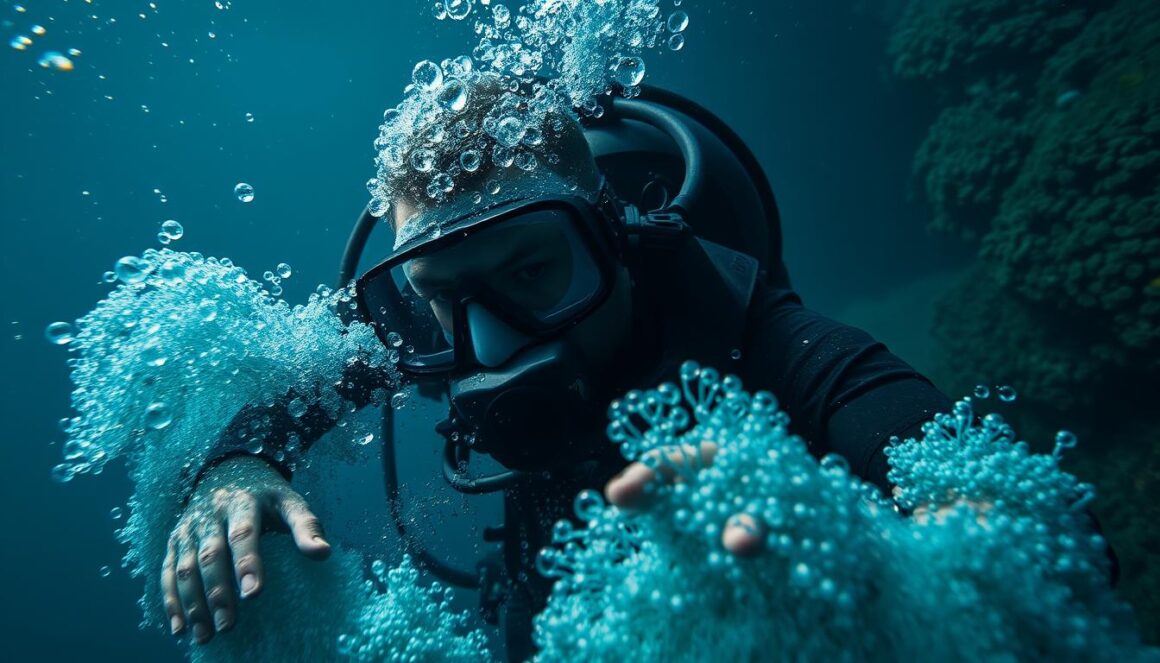
Scuba diving is an exciting underwater adventure. But, it can quickly become a life-threatening situation. Imagine being trapped in a dark, small space, with little oxygen and heavy water pressure.
This is the nightmare scuba divers face. It takes special survival techniques to get through it safely.
In extreme underwater conditions, quick thinking and resourcefulness are key. Proper training and keeping equipment in good shape are vital. Even a small failure can lead to big problems.
The story of Aron Ralston is a powerful example. He cut off his own arm to escape a boulder trap. It shows the extreme steps one might take in such situations.
Scuba diving fans and outdoor survival experts agree. The secret to surviving underwater emergencies is being prepared and adaptable. By learning survival techniques and staying alert, divers can conquer even the toughest underwater challenges.
Survivors have shown incredible resilience in extreme situations. From the icy depths of Siberia to the hot deserts of the Sahara, they have overcome incredible odds. The scuba diver’s nightmare is no different. With the right mindset and tools, divers can conquer even the most daunting underwater obstacles.
Wrapping up
These amazing survival stories from extreme climates show how strong the human spirit is. People have faced icy Siberia, hot Sahara, Mount Everest’s dangers, and the Pacific Ocean’s vastness. They showed great courage, cleverness, and the ability to adapt.
As climate change makes extreme weather worse, learning from these stories is key. It’s not just for those who love the outdoors. It’s also for anyone facing natural disasters. These tales teach us about the need to prepare, stay strong mentally, and never give up.
Stories of Bill, Christina, Steve, Guðlaugur Friðþórsson, Tyson Steele, and Lt. Leon Crane inspire us. They show how we can beat huge challenges. Their stories make us think about how to be ready for the wild’s surprises.

